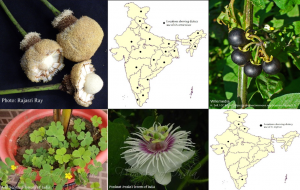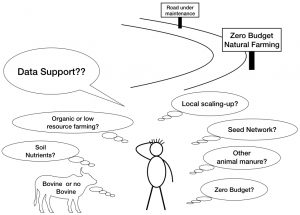The UNESCO Science Report states globally, there were about 7.8 million researchers in 2013 working full-time. 7.8 million researchers in science proportional to 0.1% of the global population (Soete et al. 2015). Isn’t it too much to ask from 0.1% of the world population to feed the rest of the 99.9% with well-researched facts of existence? Besides, inadequate attention from popular media sources and lack of implementation of those scientific outcomes in policy-making along with many other issues significantly reduce such scientific outreach. However, now, the introduction of ‘Citizen Science’ and growing use of it is certainly a promising path towards mitigating this unidirectional communication from the scientific community to the citizen. The success stories of citizen science highlight the budding interests of the common people searching for the facts. It also paves the way for the future development of a sustainable world.
My introduction with the concept of ‘sustainable use of natural resources’ happened while I was studying the famous multilateral environmental agreement, commonly known as the Convention on Biological Diversity (CBD). CBD is established on three objectives, namely, 1) the conservation of biological diversity; 2) the sustainable use of the components of biological diversity; 3) the fair and equitable sharing of the benefits arising out of the utilization of genetic resources. The conservation of biological diversity includes the protection of all living organisms from microscopic to visible in naked eyes inhabiting in varied ranges of land and aquatic habitats. The sustainable use of biological components indicates the utilization of nature-originated resources in such a way that would not create an existential crisis for those species in their original habitat. The fair and equitable sharing of benefits coming from biological components with much valued genetic potential refers to the even distribution of such profits among the people belonging to different economic strata from communities to the commercializing organizations (Anonymous 1992). As an ordinary citizen, my chances of directly being involved in the first and third objectives of CBD is limited. Although, if I follow the second objective and lessen my consumption-oriented byproducts, I certainly, can indirectly contribute to the other objectives too. On this same context, Chief Advisor of Economics and Development, World Wildlife Fund (WWF)-UK, Karen Ellis mentioned, “…I believe that finding ways to ensure that we as a global society live sustainably is the top priority if we are to ensure that nature, the species we love so much and, we ourselves are able to live in harmony on this planet…” (www.wwf.org.uk). Back then, my knowledge about sustainable lifestyle choices was majorly limited to the use of renewable energies, along with reducing plastic use. However, my intention to expand sustainability in my daily life was still alive.
With progressing time, although I gained and gaining knowledge through my journey as a researcher, whereas science, due to its inherent logic, precision, fact-checking, and risk assessment characteristics, requires a certain amount of time for its implementation in the day-to-day world. Moreover, not all scientific outcomes can equally be noticed or valued by an average person. Such a thought certainly motivated me to think from a layman’s perspective towards the current environmental issues and the implementation of a sustainable lifestyle in this regard. I observed both lack of awareness as well as reluctance in the most on having a healthy lifestyle for a blooming environment. Media outreach to the middle-class majority in this regard is also surprisingly low. Even if the concerns somehow manage to find a place in the after-meal discussions or people talk about how old days’ traditional celebrations used to happen using eco-friendly products, taking charge to act on such concerns hardly happens. Although almost every single human hands today hold a smartphone, the irony is we are far away from the effective use of it. This common scenario pushed me to question my impactful consumable surroundings using the help of the digital platform.
The moment I started using the virtual platform to get better insights into my consumable world, I discovered the deep-rooted and sometimes irreversible impact of the urban lifestyle on the environment. This impact exists beyond the visible adverse effects created by different industries (food and beverage, transport, waste management, etc.) via releasing toxic gases in the air, dumping untreated wastes of manufacturing companies directly into the river, etc. On my search to satisfy my citizen-minded curiosity, I came across to the multiple research studies. Pereira and Pereira (2018) mentioned about the human health risks from the use of consumables such as cosmetics (“The health risks associated with the use of cosmetic products become currently an emerging public health problem, where about 12% of users in the general population had experienced undesirable effects with one or several cosmetic products in the last nine years.”) and for the environmental health risks from the same mentioned, “Cosmetic ingredients are emerging pollutants too. Their environmental monitoring is at a very early stage. However, it is known that they reach the environment in multiple ways, often through water, posing health risks to marine and freshwater ecosystems and humans.” Similar other searches to look for the answers made me confirmed about two things in terms of knowing the sustainable lifestyle better: 1) To understand how are the consumables that I eat, wear, and use produced; 2) what is the effect of the same on my health and how these products end up in the environment.
Sustainable lifestyle not only talks about the use of sustainable energies or water, but it also includes eco-friendly diets, fashion, cosmetics, transports, management of wastes even, architectures (Anonymous 2017a, Anonymous 2019a, Anonymous 2019b). Although slowly but a shift towards sustainable living has already begun with the use of reusable products, organic cosmetics, etc. For example, Finland tops in the list of eco-friendly countries by promoting proper recycling in domestic-public areas with supermarkets giving shopping vouchers in exchange for plastic and metal packaging (Anonymous 2020). Denmark is increasing its tap water quality to stop people from buying bottled waters, which are receiving supports from the private industries in the country as well (Anonymous 2020). Likewise, there are many such noteworthy examples of sustainable changes worldwide. In my institution, the use of biodegradable cups and plates permanently found a place during any academic meetings. Although I was aware of such scattered sustainable lifestyle practices, I was specifically looking for a digital help that would monitor the impact of my lifestyle on the environment as well as on me.
The interest in strengthening my individualistic sustainable efforts guided me towards the relevant apps to check my lifestyle, keeping the handy use of digital media to feed curiosities in mind. After a thorough search, I have come across a few apps related to sustainable living ranging from measuring daily carbon footprint to have a sustainable food guide (Table 1). I found apps like, My Little Plastic Footprint, Carbon footprint & CO2 tracker, Good On You, and Ingred are helpful, especially in terms of feeding me with the alternative lifestyle choices, with varying degrees of sustainability monitoring. Any concerned citizen can go for such a quotidian habit check.
Know your plastic diet
Every morning starts with a plastic toothbrush. From the beginning to the end, plastics surround us in various forms. Such dependency on low-priced items is pushing us towards the grave danger, at the cost of our own life. Plastic items challenging both the maintenance of human and environmental health by leaching heat stimulated toxic chemicals. Similarly, the plastic trashes floating into the oceans are threats to the existence of sea birds and other marine animals (Alabi et al. 2019, Anonymous 2018a). Fragmented plastics or microplastics in aquatic bodies are considered as food by the aquatic animals, eventually spreading into the food web (Nara 2018). Recently the showering of microplastics through rain reportedly polluting the eco-sensitive zones (Simon 2020). Under such a scenario, a useful mobile application that collectively feeds with the menace of plastic trashes around the globe and eco-friendly alternatives of such items, surely helpful enough to track and reduce individualistic plastic consumption. With such a desire to minimize the use of such harmful everyday plastic consumables from my life, I used the following app and its overall details, emphasizing usage are mentioned below.
App name: My Little Plastic Footprint
Purpose: Cuts consumption on daily life plastic products commonly utilized in different household areas and usual plastic items while traveling and spending leisure, by providing sustainable alternatives of them.
Developer: An international team of Plastic Soup Foundation, EA, Smäll, and Ocean Recovery Alliance.
What input is required: MLPF allows users to revamp six everyday plastic consuming areas of our life namely, bathroom, kitchen, leisure, travel, garden, and house. Users can select these six different areas one by one and set their “To-do list” progressing towards the zero plastic use.
Output and its explanation: MLPF calculates users’ plastic diet based on the “Completed items” via
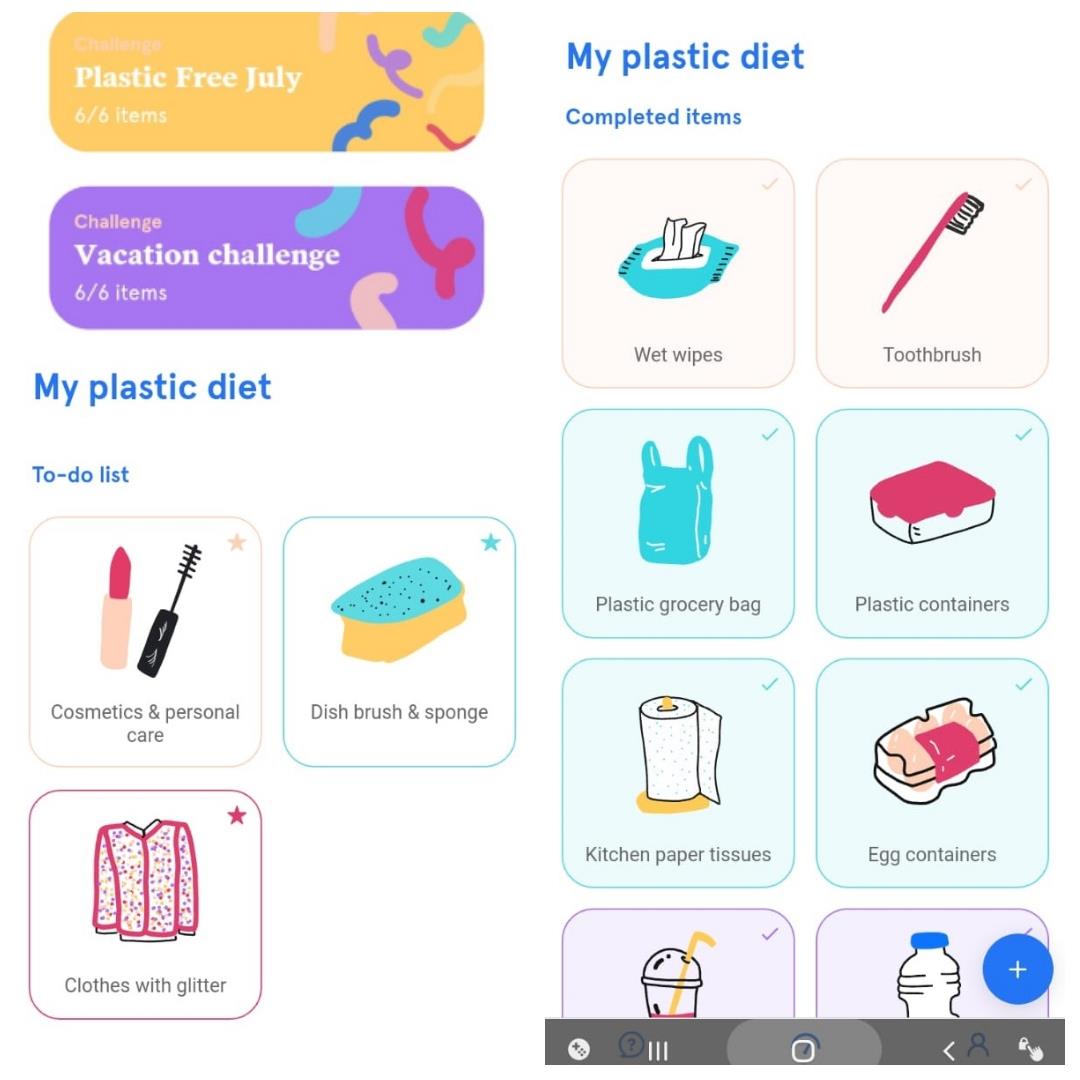
Plastic Mass Index (PMI), scaled from 0 to 100. The lower number indicates the user’s strict plastic diet. I already have started reducing my PMI by eliminating the use of plastic bottles, polybags, plastic cups-straws-plates, plastic toiletries, etc.
Examples: For example, kitchen paper tissues often have the wrappings of plastic can be replaced by cotton tea towels or old clothes reusing as kitchen towels; non-recyclable plastic kitchen dish scrubs and sponges should be replaced by wooden brushes and copper scrubs; etc.
Pros and Cons: MLPF is very useful in feeding with the negative impact of daily basis plastic items and providing easily accessible alternatives to them. Anyone can access this app with an available internet connection. However, the app redirects its users to the international brands of Beat the Microbead website for the purchase of plastic-free cosmetics and personal care products. This redirection towards the international brands of cosmetics is uneconomical for the majority of Indians at this moment.
Food and transport footprints
It is very much understandable that our transport habits have a direct connection with the carbon footprint by the exploitation of non-renewable sources of energy but, I was surprised to find how food habits contribute to the increasing carbon footprint. 70% of the total agricultural land and 30% of the earth’s terra firma one way or another contribute to the livestock rearing require forest clearing (Ilea 2008). According to the WWF, 60% of biodiversity loss is due to feed crop production (Anonymous 2017b). According to the Food and Agriculture Organization (FAO), 18% of the greenhouse gases (GHGs) generated through feed production, enteric fermentation of ruminants, manure storage and processing, and transportation of animal products. However, this percentage is considered too minimal as the FAO using backdated sources. Besides, animal wastes, pesticides-fertilizers for feed production act as the largest source of water pollution results in eutrophication, human health hazards, etc. (Dopelt et al. 2019). Even crop production to meet the inclining global demand to feed the population contributes about 14% to the GHG emissions. However, the adoption of updated technologies and agricultural practices have the highest potential to mitigate such emissions from crop productions by 2030. For example, rice cultivation in Italy has lower GHG emissions than in China due to differences in the application of fertilizers during cultivation (CropLife International 2012). It is needless to

mention how much one requires a handy smartphone application to check its overall carbon footprint under such an increasing amount of GHGs in the air scenario. Hence, to know my gross carbon footprint status better, I used the following app, summarizing its user experience.
App name: Carbon footprint & CO2 tracker
Purpose: Calculate carbon footprint arises from transport and food habits.
Developer: The Capture Club
What input is required: Users need to sign up and answer their journey mode, journey time, annual flight travel numbers, and food tracking.
Output and its explanation: The app tracks monthly carbon footprint based on the user’s fed data.
Examples: Not applicable (NA).
Pros and Cons: The app in online mode tracks its users’ overall carbon emission well. However, the food combinations provided in this app contributing to one’s CO2 footprint are inadequate to cover different diet types. For example, I follow an omnivorous diet type. It balances combining meat, fish, dairy products, and vegetables. But the app provides no such option to avail. Therefore, it is unmanageable to track my carbon footprint accurately.
Garments and Green House Gases (GHGs)
Our trendy lifestyle desire certainly provokes us to follow the ongoing fashion rage. Such cravings eventually fill our cupboard with the piles of dresses, without having any assurance of a long time requirement. The environmental impact of the clothing industry is alarming at its current extent ranging from releasing untreated textile wastewater directly into the river; consuming a considerable amount of water in cloth-making; degrading soil via chemicals used; releasing GHGs in the nature from overall manufacturing to transport of products; allowing microfibers from synthetic garments to enter the food chain via fishes; etc. (Sajn 2019, Anonymous 2017a, Anonymous 2018b). Hence, it is
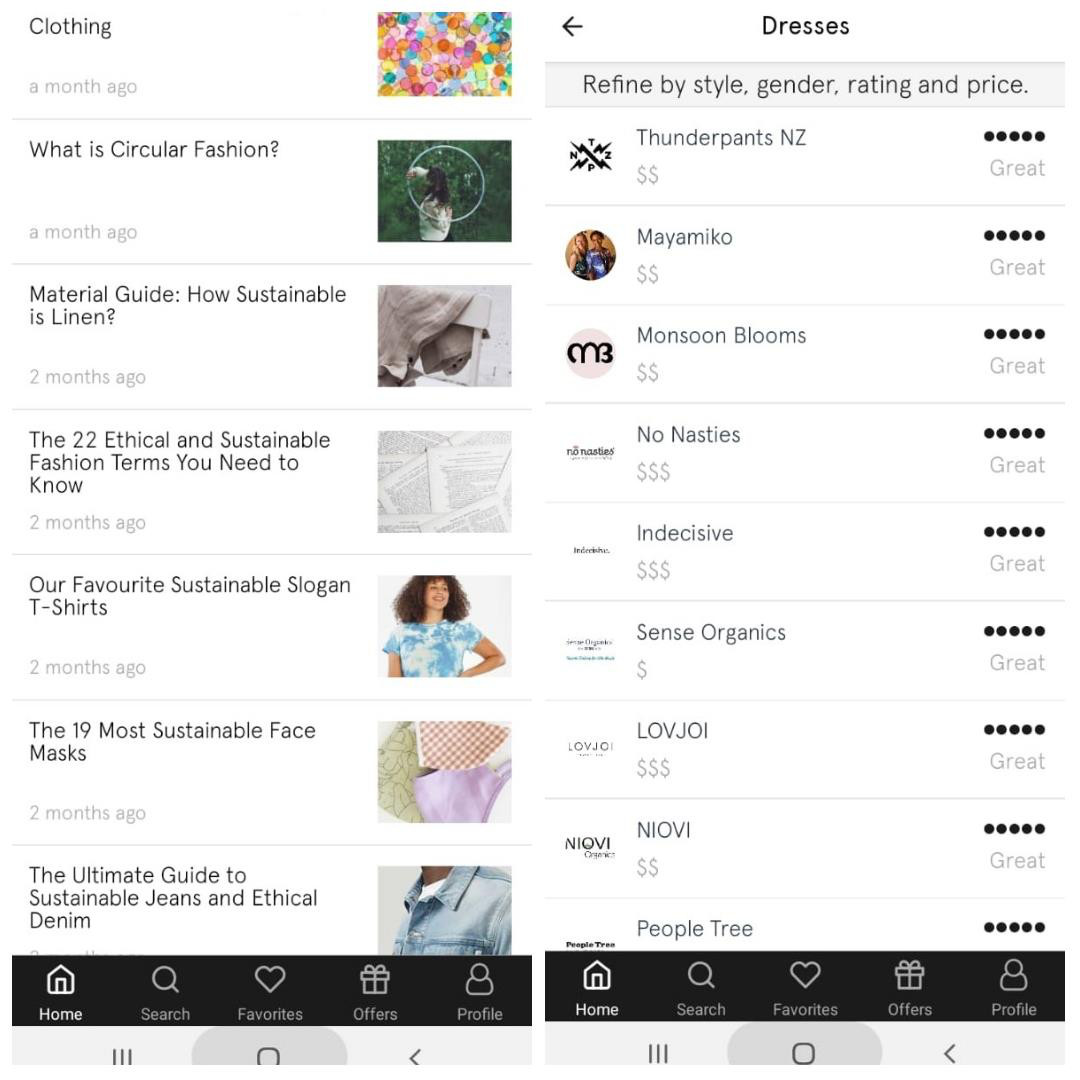
important that we fill our wardrobe in a very calculative manner as well as acquire knowledge on sustainable clothing fabrics too for the sake of declining the negative impact of textile by-products. Proper segregation and recycling-upcycling of the leftover clothes are also important in the latter scenario. But minimized and concerned uses are like front line players in this area. Under such considerations of my duty, I landed up knowing the sustainable fashion better following the below-mentioned app with its highlighted pros and cons of usage.
App name: Good On You – Ethical Fashion App
Purpose: Feed users with eco-friendly ethical clothing options.
Developer: Good On You
What input is required: The only installation required to use the app.
Output and its explanation: Once downloaded go through the ethical clothing news and purchase from listed sustainable brands.
Examples: NA
Pros and Cons: The app so far introduces appropriately with the growing availability of ethical fashion. However, only international brands till now endorsed the enlisted clothing apparel in this app. Therefore, the upper-class economy only can use these clothing options thus far. It will find more acceptance once it includes and promotes regional sustainable clothing brands.
Peek your packaged goods
We use packaged items whether for personal care goods or food items, without even giving much thought about its effect on our health, forget any concerns regarding environmental health. Highlighted media marketing on the short-term benefits of these products effectively covers the shadow beneath the oil lamp. Such products are potential sources to trigger any severe health conditions. Only the consumer consciousness under such a scenario can certainly help to cut carcinogenic, repro-toxic, endocrine-disrupting, allergy-causing items we are being exposed to either by their contact with skin or eating (Anonymous 2019b). Even more threatening is the introduction of new chemicals in the making of packaged consumables, the toxicities of which are yet to evaluate (Pereira and Pereira 2018). Such practices thrust our health towards even more unknown dangers. The environmental impact of such goods varies from product to product. Examples like spray deodorants, even the CFC-free ones, release volatile organic compounds (VOCs) responsible for ground-level ozone pollution that declines commercial plants’ yields, make them vulnerable to pest attacks, diseases, etc. Similarly, ingredients of shampoos, detergents, and cosmetics, when washed off into the water, leach chemicals within aquatic food chains (Anonymous 2019b). Such detrimental scenarios along the rising single-use plastic trash from packaged products moved me to check the chemical fate of such consumables I use via a suitable app. I found the following app useful to feed my curiosity in terms of spreading the relevant awareness and ability to check the quality of the products I am using.
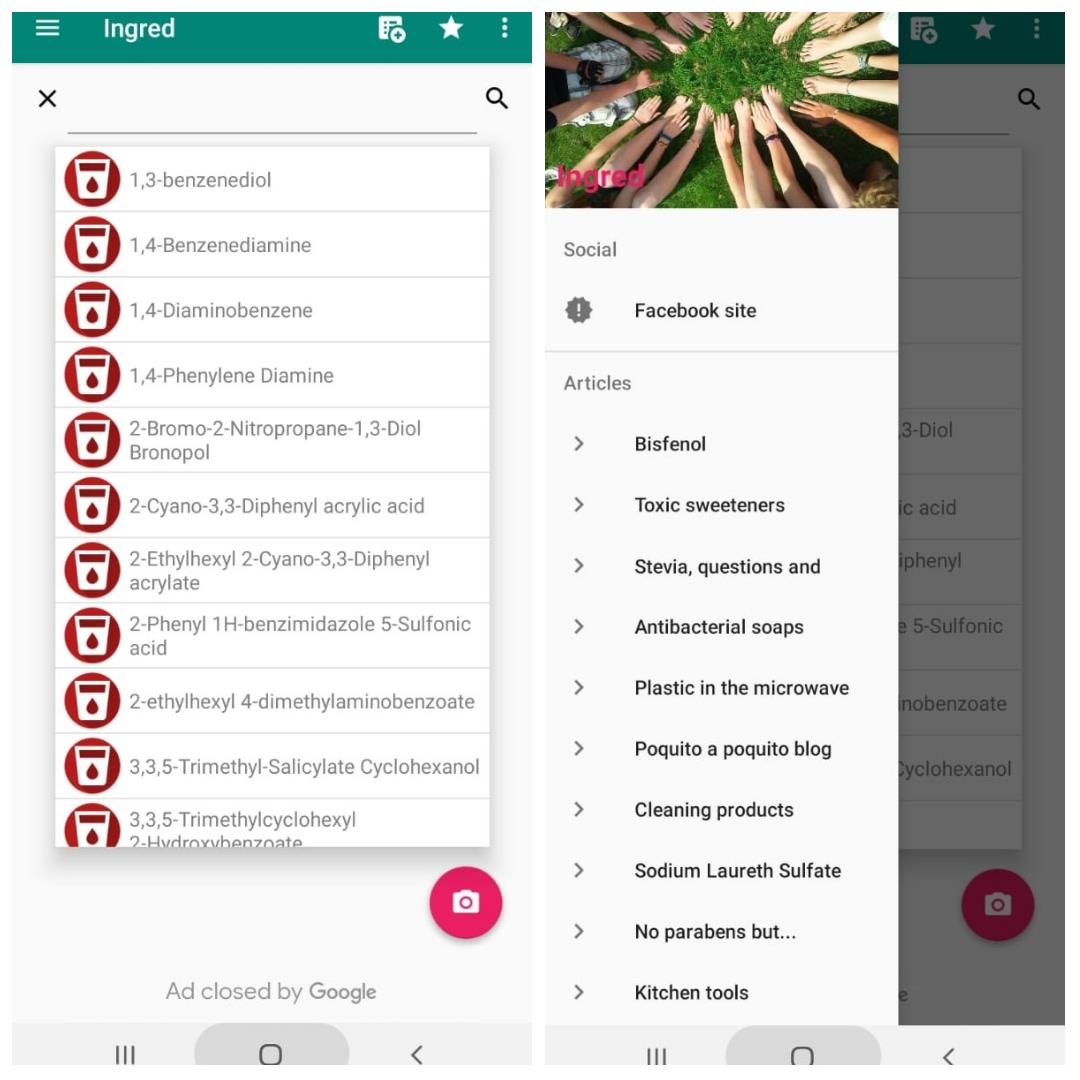
App name: Ingred – Cosmetics and food analysis
Purpose: Check the quality of the packaged consumables like food, cosmetics, etc.
Developer: Raúl Vadillo
What input is required: The user can check the quality of packaged items just by clicking a picture of their label of ingredients.
Output and its explanation: The app will explain what are all the harmful or harmless ingredients items have via its prepared known ingredients list additionally providing related article links (Figure 4). One can also add about new ingredients if found not listed in this app.
Examples: For example, in my cosmetics, I have found carcinogenic ingredients like aluminum chloride, propylene glycol, etc.
Pros and Cons: The app is very productive for those tracing qualities of the mentioned packaged consumables. However, if it provided a space for its users to share such products’ impact stories, this app could make its users more involving.
The decision of lifestyle revamping via prioritizing sustainability gave me an overview of scientific facts behind the dire need for such changes. Under such a scenario, the inclining use of smartphone apps as a sustainable lifestyle watch is a promising futuristic way to check on our daily consumables. Consider the influence of smartphones on today’s society and its omnipresence in our life app-based lifestyle checking is not a distant option for many of us. The apps I used made me believe that a change of direction towards ethical life is quite possible through their informative alternative news feeds. Although, for cosmetics and clothing, apps yet to offer the inclusion of economic options for everyone to avail the benefits. However, the same issue made me realize we need similar country-made apps to enlist sustainable India-made products that most in our country can get. The acquiring of community-made eco-friendly products will also help many Indian communities to thrive, uplifting their financial standards along with the conservation of their traditional skills. Besides, consumer-based demands are more likely the key to change the quality of the products we are receiving. Thus, we must verify the gross impact of our consumables.
Nature is a complex network of interconnected abiotic and biotic factors where every stratum flourishes while relying on each other. The current pandemic is a living example of what disruption of any of these layers can bring. Thus, it is the very much right time that we align our development in harmony with nature. We need this planet to thrive not the planet needs us.
Table 1. Top Ten Recommended Sustainability Monitoring Apps (www.activesustainability.com)

References:
- Alabi OA, Ologbonjaye KI, Awosolu O, Alalade OE (2019) Public and Environmental Health Effects of Plastic Wastes Disposal: A Review. Journal of Toxicology and Risk Assessment 5:021. doi.org/10.23937/2572- 4061.1510021
- Anonymous (1992) Convention On Biological Diversity. URL: https://www.cbd.int/doc/legal/cbd-en.pdf. Accessed on 18 August 2020.
- Anonymous (2017a) What’s wrong with the fashion industry. URL: https://www.sustainyourstyle.org/en/whats-wrong-with-the-fashion-industry. Accessed on 18 August 2020.
- Anonymous (2017b) https://www.wwf.org.uk/updates/overeating-animal-products-devastating-wildlife. Accessed on 19 August 2020.
- Anonymous (2018a) Marine Plastics. URL: https://www.iucn.org/sites/dev/files/marine_plastics_issues_brief_final_0.pdf. Accessed on 19 August 2020.
- Anonymous (2018b) Inconvenient truth: fashion is one of the most polluting industries of the world. URL:https://www.greenofchange.com/textile-pollution. Accessed on 20 August 2020.
- Anonymous (2019a) A Guide to Sustainable Living. URL: https://www.unicefusa.org/stories/guide-sustainable-living/35821. Accessed on 18 August 2020.
- Anonymous (2019b) The Truth About Environmentally Harmful Chemicals in Cosmetics. URL: https://greentumble.com/the-truth-about-environmentally-harmful-chemicals-in-cosmetics/. Accessed on 18 August 2020.
- Anonymous (2020) Top 7 Most Environmentally-Friendly Countries in The World. The European Business Review. URL: https://www.europeanbusinessreview.com/top-7-most-environmentally-friendly-countries-in-the-world/. Accessed on 18 August 2020.
- CropLife International (2012) The Carbon Footprint of Crop Protection Products. URL: https://www4.unfccc.int/sites/SubmissionsStaging/Documents/201811071654—CLI%20Submission%20Carbon%20Footprint.pdf. Accessed on 03 September 2020.
- Dopelt K, Radon P, Davidovitch N (2019) Environmental Effects of the Livestock Industry: The Relationship between Knowledge, Attitudes, and Behavior among Students in Israel. International Journal of Environmental Research and Public Health 16(8): 1359. doi.org/10.3390/ijerph16081359
- Ilea RC (2008) Intensive livestock farming: Global trends, increased environmental concerns, and ethical solutions. Journal of Agricultural and Environmental Ethics 22(2): 153-167. doi.org/10.1007/s10806-008-9136-3
- Nara R (2018) Microplastic Contamination of the Food Supply Chain. Food Safety Magazine. URL: https://www.foodsafetymagazine.com/magazine-archive1/december-2018january-2019/. Accessed on 19 August 2020.
- Pereira JX, Pereira TC (2018) Cosmetics and its Health Risks. Global Journal of Medical Research: B 18(2): 63-70.
- Sajn N (2019) Environmental impact of the textile and clothing industry. European Parliamentary Research Service.
- URL:https://www.europarl.europa.eu/RegData/etudes/BRIE/2019/633143/EPRS_BRI(2019)633143_EN.pdf. Accessed on 19 August 2020.
- Simon M (2020) Plastic Rain Is the New Acid Rain. URL: https://www.wired.com/story/plastic-rain-is-the-new-acid-rain/. Accessed on 19 August 2020.
- Soete L, Schneegans S, Eröcal D, Angathevar B, Rasiah R (2015) A world in search of an effective growth strategy. UNESCO Science Report: Towards 2030 pp. 33. URL: http://uis.unesco.org/sites/default/files/documents/unesco-science-report-towards-2030-part1.pdf. Accessed on 18 August 2020.
- www.wwf.org.uk Why We Promote Sustainable Living. URL: https://www.wwf.org.uk/what-we-do/promoting-sustainable-living. Accessed on 03 September 2020.
- www.activesustainability.com Top 10 apps for sustainable living. URL: https://www.activesustainability.com/sustainable-life/top-10-apps-for-sustainable-living/. Accessed on 18 August 2020.
About Author:

Soumi Paul
Department of Environmental Biotechnology, Bharathidasan University, Tiruchirappalli, Tamil Nadu – 620024
E-mail: soumipaul.ebt@bdu.ac.in


